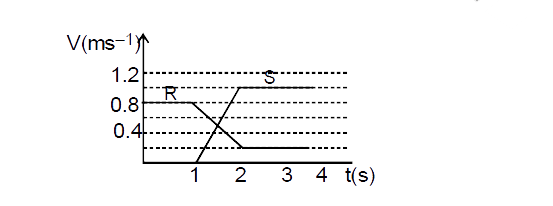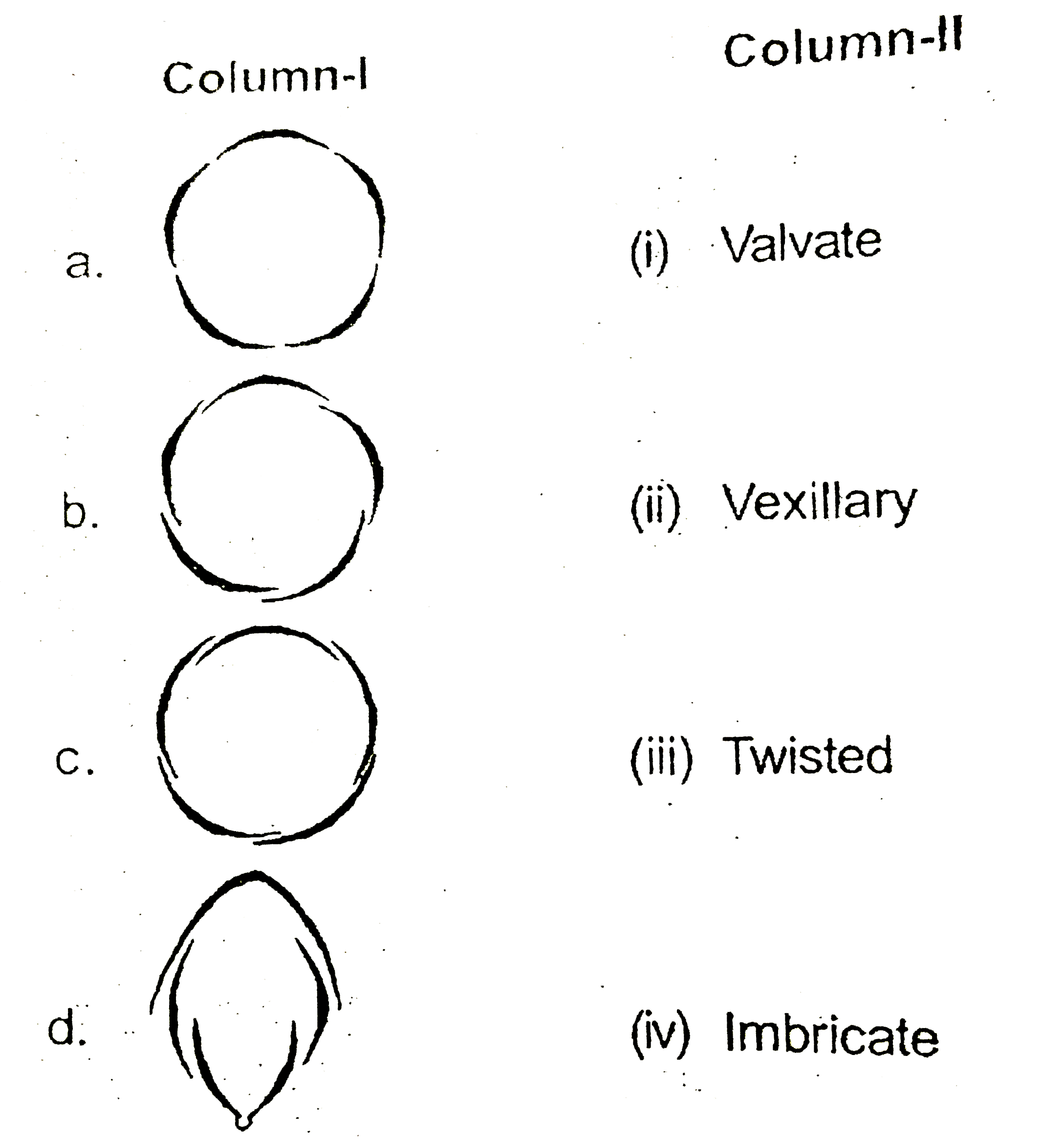R-II strain of T4 bacteriphage cannot lyse Escherichia coli .Two of its types ,R−IIxandR−IIy were allowed to invade the bacterium which lysed because of
Transformation into wild type
Presenece of similar cistrons
Presence of different cistrons
Absence of mutation
The correct Answer is:A
To solve the question regarding the R-II strain of T4 bacteriophage and its ability to lyse Escherichia coli when two types, R-II^(x) and R-II^(y), are used, we can follow these steps:
1. Understanding Bacteriophages:
- Bacteriophages are viruses that specifically infect bacteria. The T4 bacteriophage is a well-known example that targets E. coli.
Hint: Remember that bacteriophages need to attach to and invade bacterial cells to replicate.
2. Identifying the Problem with R-II Strain:
- The R-II strain of T4 bacteriophage cannot lyse E. coli on its own. This means that when R-II infects E. coli, it fails to produce the necessary proteins or enzymes required for lysis.
Hint: Consider why a virus might fail to replicate or cause lysis in a host cell.
3. Introducing R-II^(x) and R-II^(y):
- The two types, R-II^(x) and R-II^(y), are variants of the R-II strain. When these two strains are allowed to infect E. coli together, they result in lysis.
Hint: Think about the role of genetic variation and how different strains might complement each other.
4. Mechanism of Lysis:
- The reason for the lysis when both R-II^(x) and R-II^(y) are present is that each strain produces different enzymes (proteins) necessary for the lytic cycle. R-II^(x) produces one type of enzyme, while R-II^(y) produces another.
Hint: Consider how enzymes work together to achieve a common goal in biological processes.
5. Role of Cistrons:
- The enzymes produced by R-II^(x) and R-II^(y) are coded by different cistrons (segments of DNA that encode a single polypeptide). The presence of different cistrons allows for the production of the necessary proteins that lead to the lysis of the bacterial cell.
Hint: Recall that cistrons are part of the genetic code that dictates protein synthesis.
6. Conclusion:
- Therefore, the lysis of E. coli occurs due to the presence of different cistrons in the R-II^(x) and R-II^(y) strains, which lead to the production of different enzymes that work together to cause lysis.
Final Answer: The correct explanation for the lysis of E. coli when both R-II^(x) and R-II^(y) are present is the "presence of different cistrons."
- Bacteriophages are viruses that specifically infect bacteria. The T4 bacteriophage is a well-known example that targets E. coli.
- The R-II strain of T4 bacteriophage cannot lyse E. coli on its own. This means that when R-II infects E. coli, it fails to produce the necessary proteins or enzymes required for lysis.
- The two types, R-II^(x) and R-II^(y), are variants of the R-II strain. When these two strains are allowed to infect E. coli together, they result in lysis.
- The reason for the lysis when both R-II^(x) and R-II^(y) are present is that each strain produces different enzymes (proteins) necessary for the lytic cycle. R-II^(x) produces one type of enzyme, while R-II^(y) produces another.
- The enzymes produced by R-II^(x) and R-II^(y) are coded by different cistrons (segments of DNA that encode a single polypeptide). The presence of different cistrons allows for the production of the necessary proteins that lead to the lysis of the bacterial cell.
- Therefore, the lysis of E. coli occurs due to the presence of different cistrons in the R-II^(x) and R-II^(y) strains, which lead to the production of different enzymes that work together to cause lysis.
Topper's Solved these Questions
- CHROMOSOMAL BASIS OF INHERITANCEBOOK - DINESH PUBLICATIONCHAPTER - CHROMOSOMAL BASIS OF INHERITANCEEXERCISE - Check Your Grasp
45 Videos
- CHORDATA- PROTOCHORDATABOOK - DINESH PUBLICATIONCHAPTER - CHORDATA- PROTOCHORDATAEXERCISE - CYG
7 Videos
- COELENTERATA AND CTENOPHORA (OR CNIDARIA AND ACNIDARIA)BOOK - DINESH PUBLICATIONCHAPTER - COELENTERATA AND CTENOPHORA (OR CNIDARIA AND ACNIDARIA)EXERCISE - CYG
9 Videos
Similar Questions
Write the name of genus, species, strain of source bacteria from which the following endonucleases are obtained. Also write the order of their identification in the bacteria.
i) Eco R I
ii) Hind II
View SolutionThe diagram shows the velocity - time graph for two masses R and S that collided elastically. Which of the following statements is true ?

I. R and S moved in the same direction after the collision.
II. The velocities of R and S were equal at the mid time of the collision.
III. The mass of R was greater than mass of S.
View Solution
Knowledge Check
R-II strain of T4 bacteriphage cannot lyse Escherichia coli .Two of its types ,R−IIxandR−IIy were allowed to invade the bacterium which lysed because of
ATransformation into wild typeBPresenece of similar cistronsCPresence of different cistronsDAbsence of mutationA mutant strain of T4 – Bacteriophage, R-II, fails to lyse the E-Coli but when two strains R−IIX and R−IIY are mixed then they lyse the E.Coli. What may be the possible reason : -
ABacteriophage transforms in wildBIt is not mutatedCBoth strains have simillar cistronsDBoth strains have different cistronsA mutant strain of T4 – Bacteriophage, R-II, fails to lyse the E-Coli but when two strains R−IIX and R−IIY are mixed then they lyse the E.Coli. What may be the possible reason : -
ABacteriophoage transforms in wildBIt is not mutatedCBoth strains have similar cistronsDBoth strains have different cistrons
Match the column-1 with column-ii w.r.t. aestivation

View SolutionA particle is projected from the surface of earth of mass M and radius R with speed v. Suppose it travels a distance x(<<R) when its speed becomes v to v/2 and y(<<R) when speed changes from v/2 to 0. Similarly, the corresponding times are suppose t1andt2. Then
Column-IColumn-II(A)x/y(p)=1(B)t1/t2(r)>1(r)<1
View SolutionStatement I is True: Statement II is True; Statement II is a correct explanation for statement I Statement I is true, Statement II is true; Statement II not a correct explanation for statement I. Statement I is true, statement II is false Statement I is false, statement II is true Let f:R→R [0, π/2] defined by f(x)=tan−1(x2+x+a) , then Statement I: The set of values of a for which f(x) is onto is [14,∞) because Statement II: Minimum value of x2+x+a is a−14. a.A b. B c. C d. D
View SolutionStatement (S): India National Congress had collaborated/assisted British in II- World War.
Reson ( R): Because they were expecting to complete independence.
Code
View SolutionWhich of the following is true w.r.t. EVS subject of classes I and II?
EVS as subject is not easy to understand at classes I and II
Issues and concerns related to EVS are transacted through language
Issues and concerns related to EVS are transacted through language and mathematics
EVS is a new subject introduced at the classes 1 to II
View Solution
